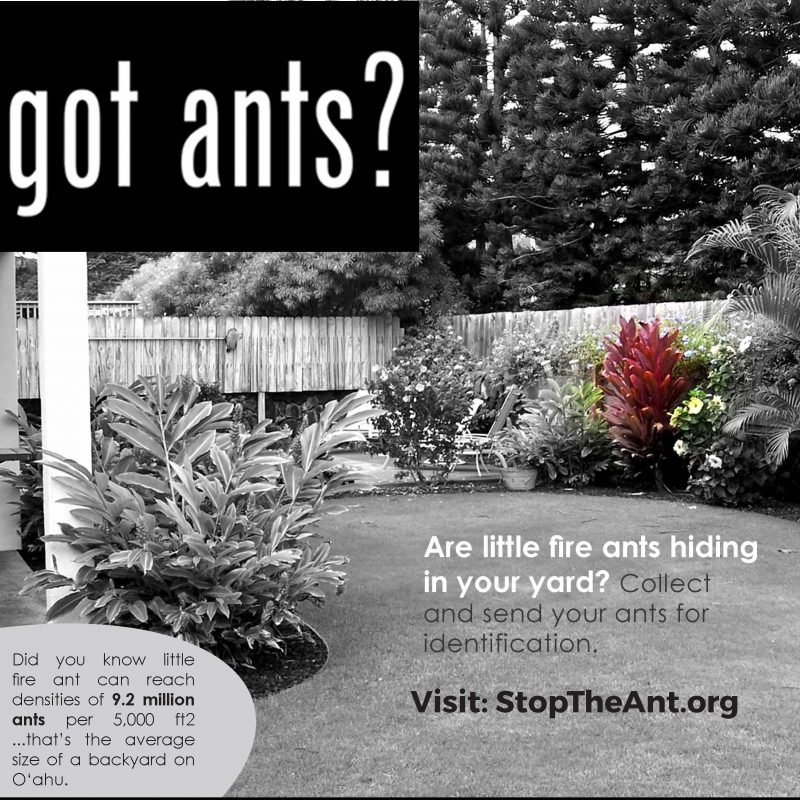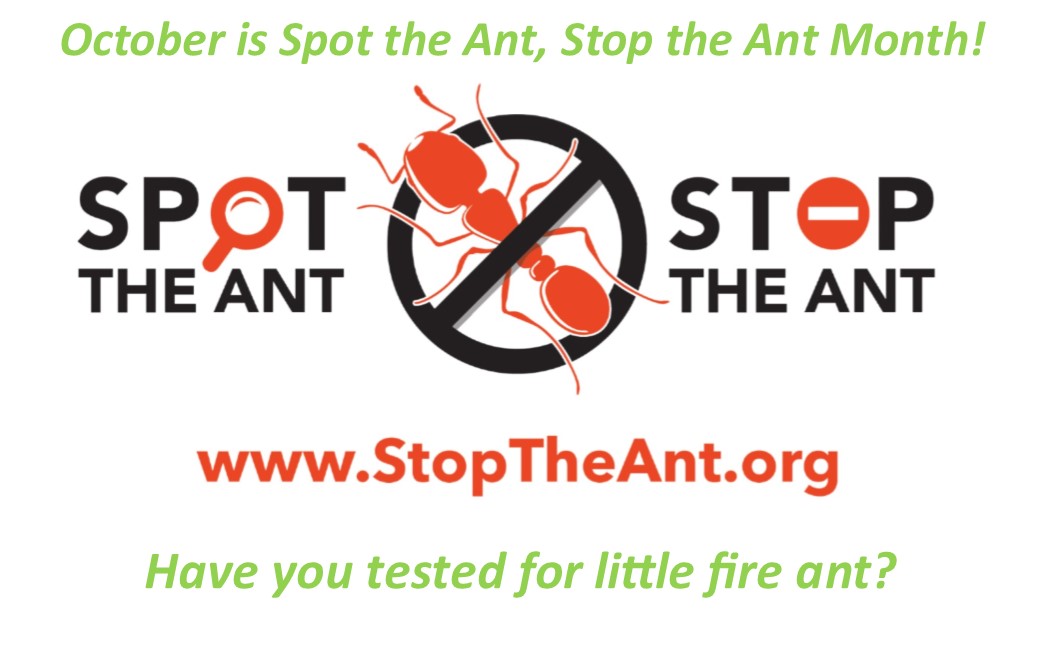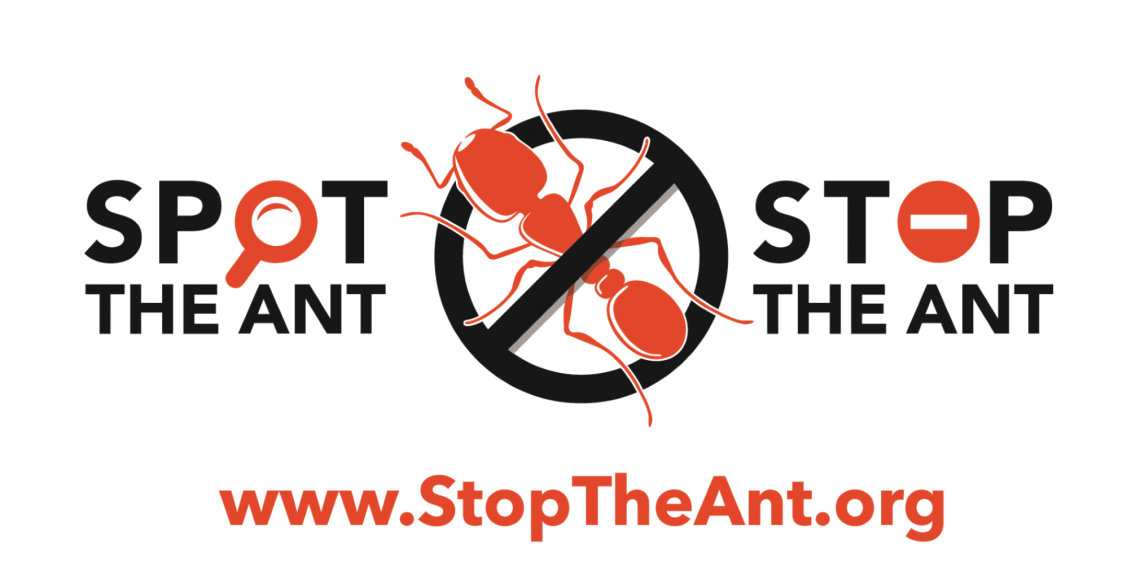SEVERAL LITTLE FIRE ANTS INFESTATIONS CURRENTLY UNDERGOING TREATMENT ON OAHU.
#stoptheant
Second Windward Little Fire Ant Infestation Found in Ahuimanu
The infestation totals 18 properties and treatment area is 3 acres. Finding them while the infestation is small is essential!
OCTOBER IS “SPOT THE ANT, STOP THE ANT MONTH”
Find them before they find you! By testing once a year, you can ensure that you are either LFA-free or eradicate the infestation while it’s still small.
The second monitoring survey found no little fire ants in Mililani-Mauka
The Oahu Invasive Species Committee assisted the Hawaii Department of Agriculture along with the Hawaii Ant Lab, Oahu Army Natural Resources…
Read More
September is “Spot the Ant, Stop the Ant Month” in Hawaii
Find out why Governor Ige and Mayor Caldwell have asked for your help!




